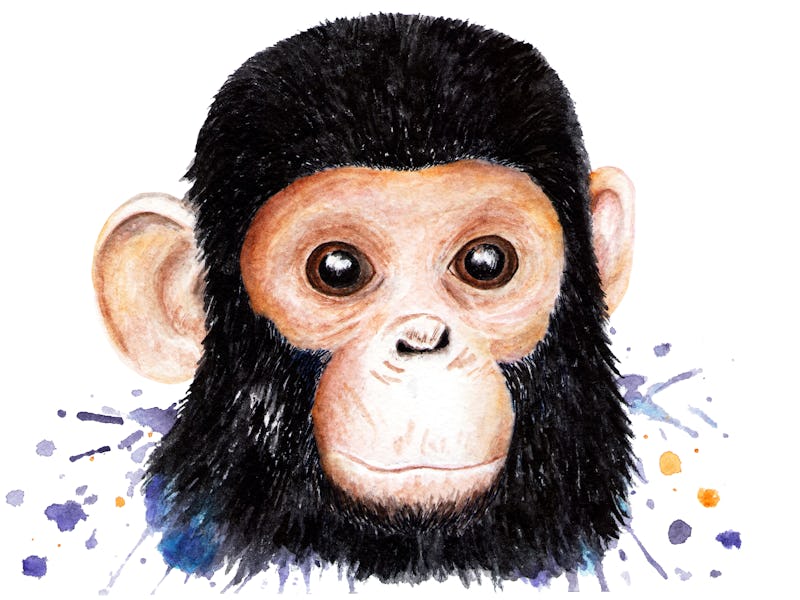Sex is stressful: A new chimp study has revealed something human in them .. and us

Humans and chimpanzees have a lot in common, and a new study has revealed yet another shared trait -- how we respond to stress. And what that means for humans can shed a light on how to manage stress as we get older.
On Monday in the journal Proceedings of the National Academy of Sciences, new research shows that this common response can be chalked up to a dysregulation in the production of cortisol, a stress hormone, which happens in humans and chimps as we grow older.
As we age, a variety of things begin to go haywire in our body.
One of those chnages happens to the hypothalamic–pituitary–adrenal (HPA) axis, a complex and convoluted biological system that regulates the body's response to stress. It does this by releasing hormones, such as cortisol. The older we get, the more the HPA axis falls out of whack, and the more cortisol we end up producing as a result.
Cortisol, a type of glucocorticoid, orchestrates a number of essential functions in mammals, such as regulating our metabolism and keeping blood pressure under control. But, too much of the hormone has been linked to many of the degenerative symptoms of an aging body – such as inflammation, cognitive loss, and a deteriorating immune system.
"A similar kind of dysregulation occurs in chimpanzees"
Classic markings of an aging HPA axis in humans include raised cortisol levels, a heightened response to stressors, and a blunted circadian rhythm – all signs they observed in the aging primates they studied.
“We found strong evidence that a similar kind of dysregulation occurs in chimpanzees,” says the lead author, Melissa Emery Thompson, an anthropologist at the University of New Mexico.
Emory Thompson and her team looked at over 20 years of data from 59 adult wild chimpanzees who were from Kibale National Park in Uganda. Between the years of 1997 and 2017, they measured the levels of cortisol in the urine of these chimpanzees, as well as observing their behavior. In order to collect the samples from the chimps, the research staff used catchpoles with plastic bags attached to the end to catch the urine as it fell from the chimps high up in the trees.
When they looked at the animals’ urinary cortisol levels, the researchers found that both the chimps and humans share one major common sign of aging; the production of glucocorticoids was seen to rise with age, an increase that could not be explained away by changes in social status or reproductive activity of the animals.
I'm getting too old for this? — The female chimps were found to have the highest levels of cortisol when they were sexually receptive. Emory Thompson explains this is a time when they are exposed to a lot of aggression from the male chimps. This pattern of cortisol spiking only increased as they grew older.
Conversely, males’ cortisol levels were at their highest when they were in the presence of sexually attractive females, but this effect was found to decrease as the male chimps aged.
The study’s findings hint that changes in cortisol production as we age is actually an ancient feature of aging in hominids. “This suggests that humans inherited this feature, and it is neither a by-product of our extended lifespans nor our unusual modern environments,” Emory Thompson tells Inverse.
Going forward, Emery Thompson says they are turning to look at other features of aging, such as physical frailty, social behavior, and fertility, “to try to build a cohesive picture of chimpanzee aging”.
In doing so, she says, they are looking to “to determine which aspects of aging are unique to the human species” – and which aren’t.
Ultimately, she hopes that the research will illuminate what factors shaped the prolonged lifespan of humans, as well as the extent to which aging processes are influenced by our environment.
Abstract: Cortisol, a key product of the stress response, has critical influences on degenerative aging in humans. In turn, cortisol production is affected by senescence of the hypothalamic–pituitary–adrenal (HPA) axis, leading to progressive dysregulation and increased cortisol exposure. These processes have been studied extensively in indus- trialized settings, but few comparative data are available from hu- mans and closely related species living in natural environments, where stressors are very different. Here, we examine age-related changes in urinary cortisol in a 20-y longitudinal study of wild chimpanzees (n = 59 adults) in the Kanyawara community of Kibale National Park, Uganda. We tested for three key features of HPA aging identified in many human studies: increased average levels, a blunted diurnal rhythm, and enhanced response to stressors. Us- ing linear mixed models, we found that aging was associated with a blunting of the diurnal rhythm and a significant linear increase in cortisol, even after controlling for changes in dominance rank. These effects did not differ by sex. Aging did not increase sensitivity to energetic stress or social status. Female chimpanzees experienced their highest levels of cortisol during cycling (versus lactation), and this effect increased with age. Male chimpanzees experienced their highest levels when exposed to sexually attractive females, but this effect was diminished by age. Our results indicate that chimpanzees share some key features of HPA aging with humans. These findings suggest that impairments of HPA regulation are intrinsic to the aging process in hominids and are side effects neither of extended human life span nor of atypical environments.